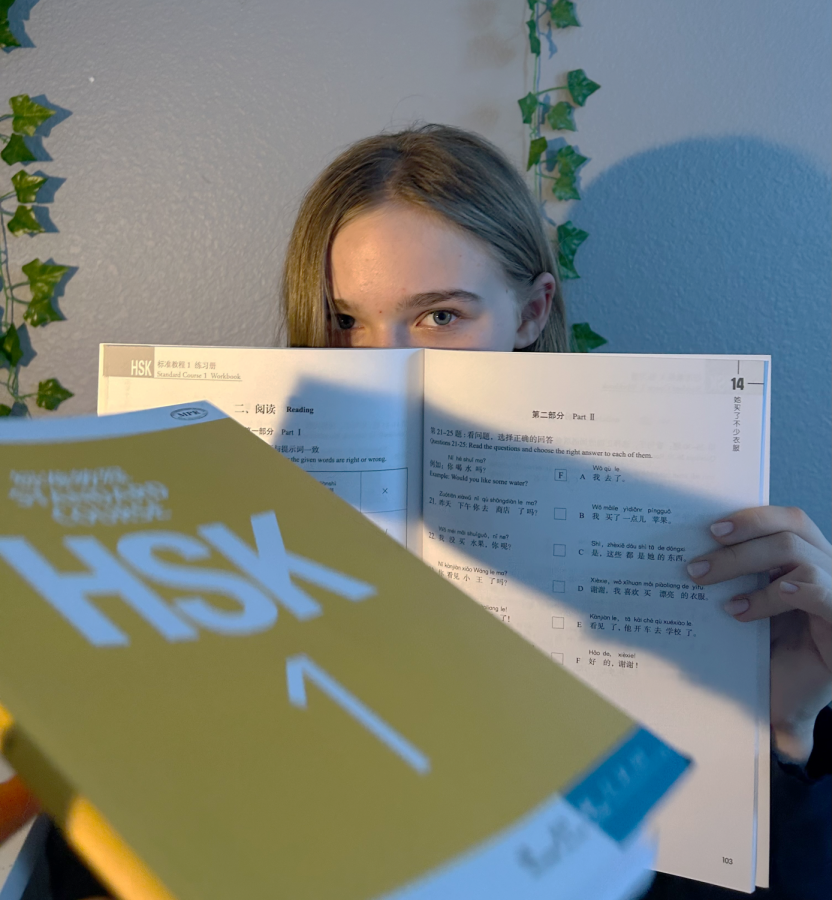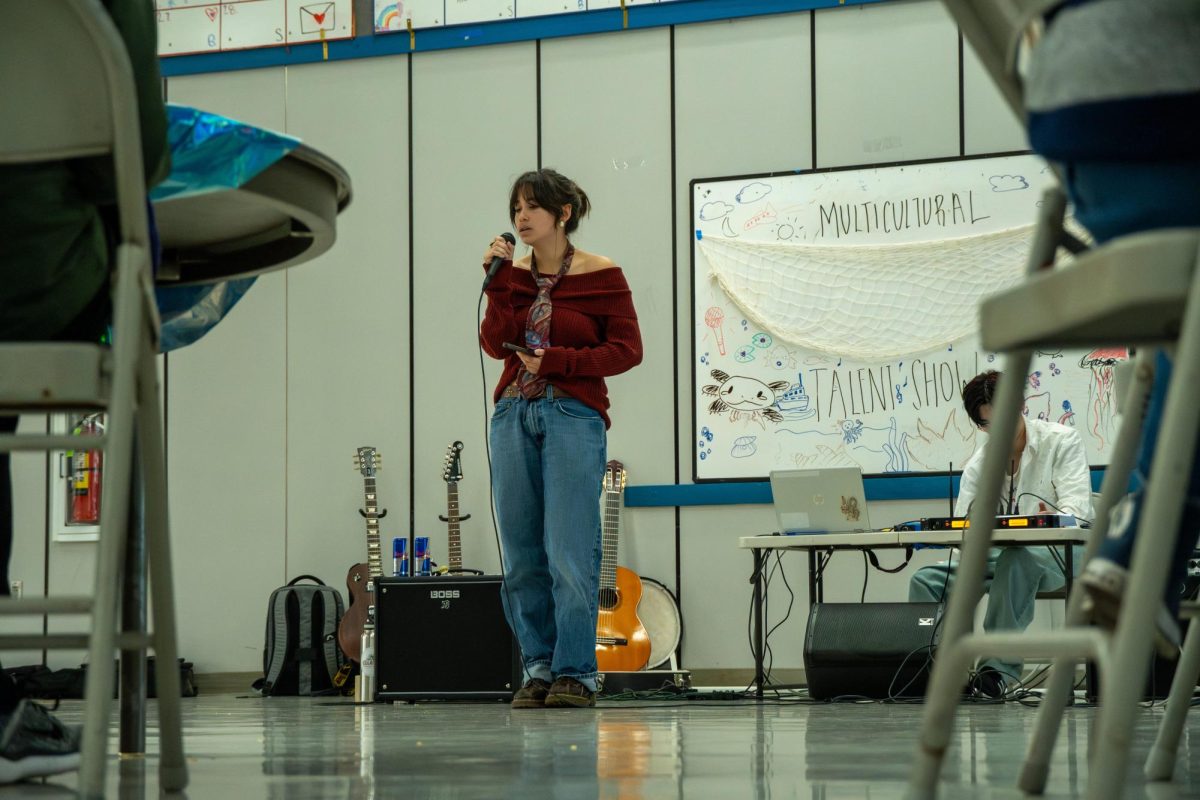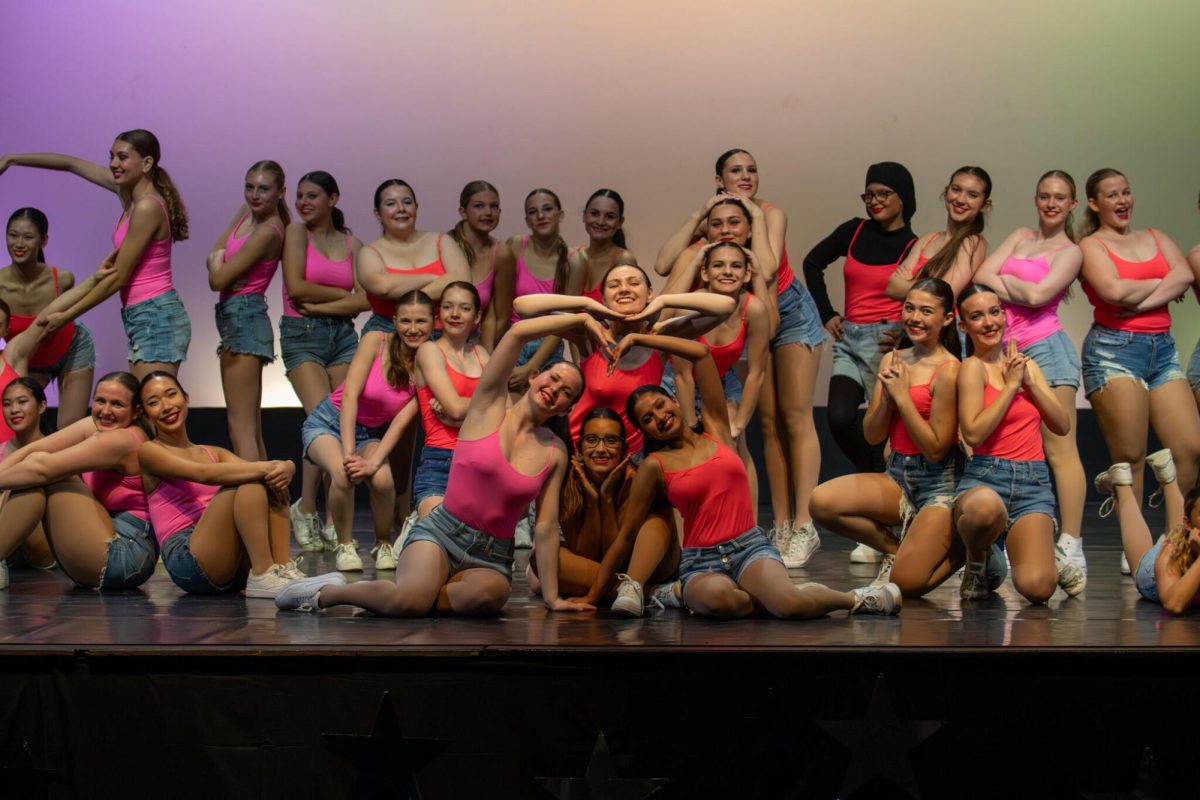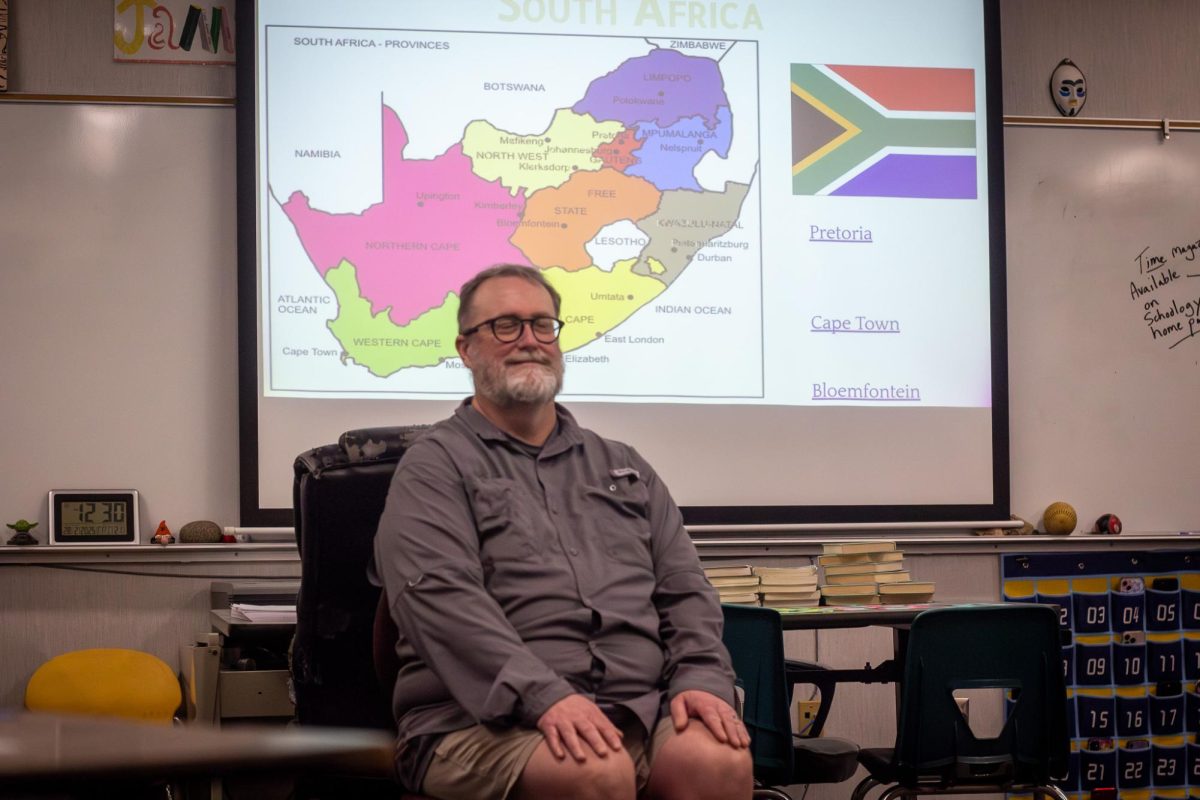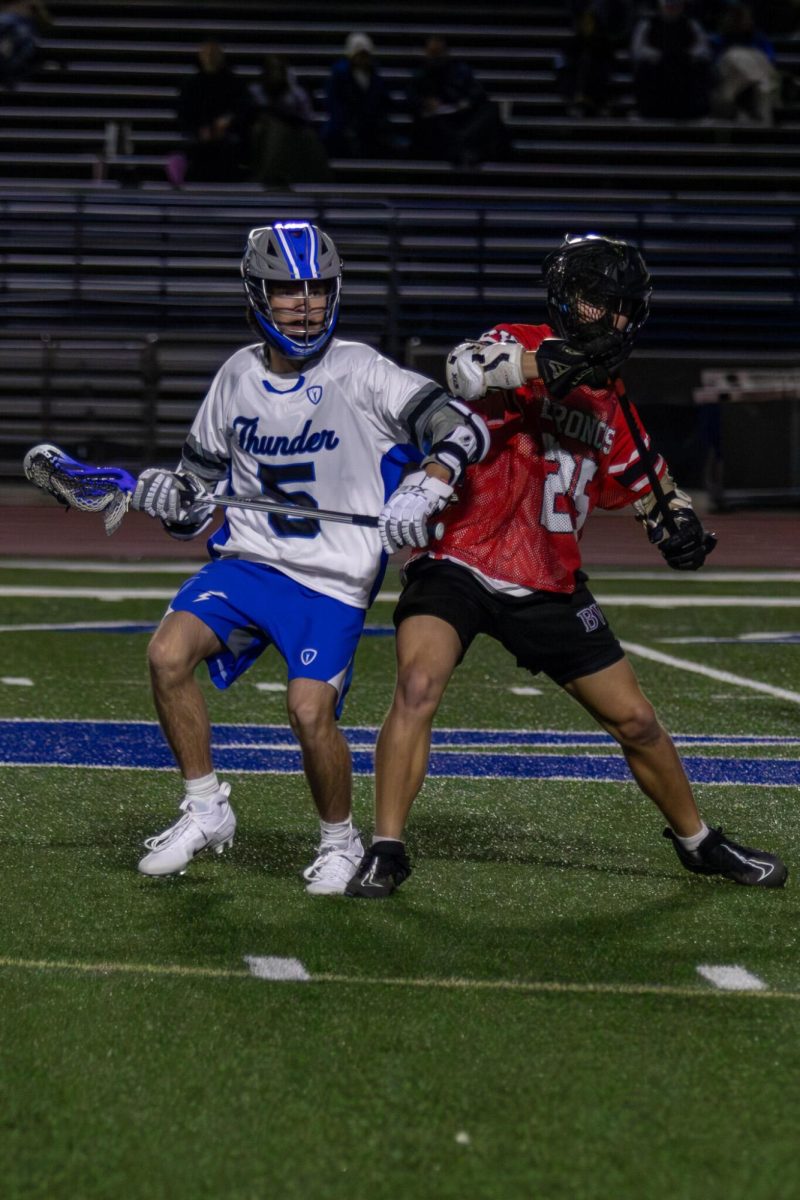The Secret to a Language
Numerous techniques of learning a foreign language are circling around the media. Should Rocklin High School up their game?
May 22, 2023
In many American public schools today, the traditional way of teaching a language is through memorization of vocabulary, studying terms, verbs, tenses and such. This process is what most students at Rocklin High School are introduced to when studying a foreign language. However, is it really effective to treat language learning in such a way?
Understanding how our brain works
First, we need to understand how we learned our first language and the importance behind it. When a baby is born and typically if surrounded by a mother, father, or siblings, they will listen to them speaking. Although they cannot comprehend the words, the human brain is able to start recognizing speech patterns and sounds. According to the article Language Acquisition and Brain Development, “During the years of language acquisition, the brain not only stores linguistic information but also adapts to the grammatical regularities of language.” This means that not only does your brain catch the sound of the word, it also catches the grammatical use of the language and the certain sounds the language has.
Now although it is true that acquiring a language as a child is a lot easier than a teenager or adult, the same principles can still be applied to language acquisition if there is a desire as well as materials to do so. To acquire a language, one needs visual and or auditory content such as picture books or tv shows. When watching a show in a different language with no translation subtitles, the brain is forced to make assumptions based on what is going on in the visual aspect, and then connect the words they hear to the picture it saw. The same applies to picture books, the brain connects the picture to the letters and words on the paper. With this method fluency takes time just like any other method, however the level of fluency achieved over a period of time and ability to speak is much more effective than memorizing flashcards, the traditional way of studying a language.
Student’s Opinion
Zachary Fujioka, a sophomore currently in Spanish three Honors, believes RHS should teach students to acquire a language rather than study it. Usually, the biggest difficulty with learning a language is the speaking aspect and having the ability to keep up with the speed of a native speaker. Fujioka said, “I think the biggest negative is that we need to be able to speak with native speakers, obviously it won’t be easy to do but I think it would be very beneficial.” With English, there are many instances where we just don’t say the proper word for example “I dunno” instead of “I don’t know.” This applies to other languages as well and Fujioka said that, “Obviously when you learn a new language you don’t know it right off the bat but immersion helps you familiarize with the language and the uses that are not just textbook but slang and stuff.” The issue about immersion in RHS where there are so many diverse people with different goals is that it is hard to accommodate everyone, therefore using a traditional teaching method ensures students pass the class. However this leaves people like Fujioka at a disadvantage since instead of immersion,“ in a language class in general [students] tend to just learn vocabulary and conjugations.” Accommodating to every student is difficult, however Fujioka said, “I think separate classes would be useful, like the teachers would be able to speak the language more and the students would be able to be more familiar with the language.” In other words, have one class for people who want to become fluent in a foreign language and another class for those who just want to have their graduation requirements out of the way.
“I cried a lot. I was there from 11 until I was 12 but I learned French in 3 months.”
Omer Mohammad, a freshman currently taking ASL 1, has a different situation when it comes to learning the language. Since ASL is a visual language and not an oral language, language immersion does not work since to immerse yourself you need to use your listening skills as well as visual and with ASL you are only able to use visual resources. Omer said, “I think Rocklin High school teaches ASL well, but there are some improvements that can be made. A lot of signs are updated very frequently and the books they use in ASL classrooms are not always up to date.” Omer also commented on the structure and overall environment of the class. He said, “The overall structure of the class should be changed a little bit because most of it is kind of just seeing the sign and then learning it. There is not a lot of engagement. There are partner activities but I think there should be more of those to kind of help students learn how to sign naturally and become fluent quickly.” Unlike Spanish, ASL offers students to decide the pace of their studying as well as how they study the material. Omer said, “I think it allows students to learn at their own pace if they want to go back and look at signs. There are a lot of resources that are available if you want to go back or learn separate signs or even if you want to go ahead.” The experience of a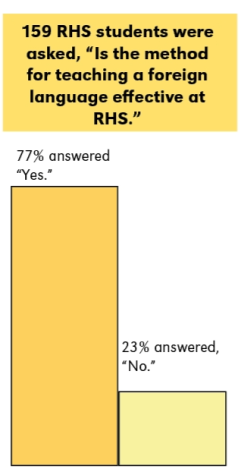 student learning a language is a more common story among students, however the experience of a teacher learning a language is not something that is discussed.
student learning a language is a more common story among students, however the experience of a teacher learning a language is not something that is discussed.
Teacher’s Opinion
Stephanie Arino, the French teacher at RHS experienced the method of language learning as we know as language acquisition. Mrs. Arino was sent to an international school in France which is where she learned French. She said that, “At that time I knew no French at all, but when you are immersed you learn better. I was thrown into a school where only French was spoken and I had to learn to survive and apparently survival is the best way to learn a language.” As a foreign language teacher at RHS, Mrs. Arino believes that full immersion is the most effective way to learn a language saying that, “In Europe it is done completely differently. If I had to pick between the two I’d choose full immersion like Europe and other foreign countries do it.” The question that persists is if language acquisition is so effective, why can’t RHS create an environment where foreign language departments can use full immersion? The answer lies in the core values of RHS, one of them being that everyone gets multiple chances to succeed. Mrs. Arino justified this, saying that, “We can’t do that here at RHS for one reason because this is a school where we give everyone a second, a third and fourth chance and you can’t do that with full immersion.” However another issue is considering the students who are just trying to get the foreign language credit to graduate. When Rocklin High School first opened, they modeled Del Oro which had two separate paths, one for language acquisition and one for the credits to graduate. Mrs. Arino said, “I would think it would be best to have two paths, a path for just needing to get the year or two, and a path for students who really want to become fluent. We tried that for a while but at Rocklin High School they don’t like segregating. They don’t like us to force kids all together who are similar, they want everybody to work together and learn from each other. However, that doesn’t work for foreign languages.” Mrs. Arino’s French three Honors class focuses more on full immersion compared to the French two and French one classes. The positive aspect about giving multiple chances to students is that some may gain a desire to keep learning, however that is not the case for everyone. Mrs. Arino said in regard to that, “We give them a second chance and we still make sure that they are trying, however they don’t really learn the language and it’s a fake lesson and a fake system for them”
Language is what causes deeper human interaction. Movements of our mouth and the sounds that produce, connect people and create communities just from that. Languages intertwine with culture and when learning or acquiring a language, one also gains a deeper understanding of one’s identity and culture. Mrs. Arino encourages students to learn a language, saying that, “It is so important to open up your eyes to the world and by learning a new language you learn a new culture and you understand you are not the only person in the world.”



